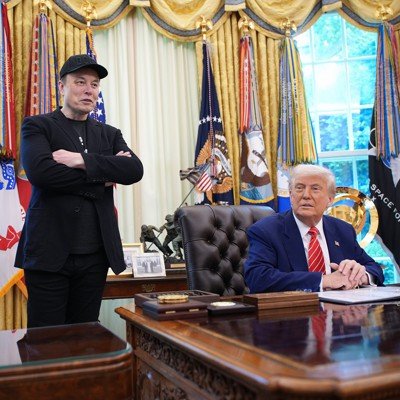The Trump administration is seeking $45 million in funding for the Department of Government Efficiency next year, offering a hint of work to come even as Elon Musk steps back from the initiative.
The administration’s budget request includes provisions for 150 DOGE employees, the majority of whom would be classified as reimbursable and funded by agencies. But an estimated $6 million would be set aside for compensation of the 30 employees directly paid from DOGE.
The White House is asking for $10 million for a “software modernization initiative,” and an additional $35 million would come from agencies reimbursing DOGE for services, a setup that the U.S. Digital Service was using before President Donald Trump remade the organization into DOGE. That’s in addition to $22 million left over from this year.
So far, DOGE hasn’t garnered the $1 trillion in savings Musk promised when he came into the administration. Even so, it has tried to shutter entire agencies, helped lay off thousands of federal employees and worked with agencies to cancel government contracts.
During a Friday press briefing marking the end of Musk’s stint as a time-limited “special government employee,” Trump praised the businessman for doing a “fantastic job.” He pointed to retirement modernization as an accomplishment of DOGE — although work to bring federal retirement processes online started years prior to this administration.
Musk will stay involved with the effort moving forward, the president said.
“Elon’s really not leaving. He’s going to be back and forth, I think,” said Trump, calling DOGE Musk’s “baby.”
Since January, DOGE’s efforts to gather data across the government have raised privacy and ethics concerns, especially given that Musk’s businesses have been on the receiving end of regulatory scrutiny. Some of Musk’s businesses, like SpaceX, are also government contractors.
Musk himself said Friday that he anticipated “continuing to be a friend and advisor to the president and continuing to support the DOGE team.”
The budget documents released last week point to DOGE’s work on technology and software, stating that DOGE “transforms Federal technology and software, driving unprecedented efficiency and productivity.”
Even so, some government modernization work — like an effort to improve how the CDC tracks disease data — has suffered from the administration’s push to shrink the size of the government’s workforce.
Trump set up Musk’s team as a temporary organization in what was formerly the U.S. Digital Service on his first day in office with a focus on government technology, as well as a direct reporting line into the White House.
USDS was established during the Obama administration as a way to get private sector techies into government for short periods of time to help agencies with their technology. USDS helped staff various projects at agencies, like modernizing the SSA website.
Now, some of those agencies are struggling to fill staffing gaps left after DOGE laid off employees that were a part of USDS before it became DOGE. Others from what used to be the U.S. Digital Service before it became DOGE have left on their own accord. The Trump administration has also dismantled 18F, another internal tech consultancy housed at the General Services Administration.
New DOGE staff haven’t necessarily been assigned to those projects previously worked on by the legacy USDS team, one current government employee not authorized to speak on the record told Nextgov/FCW.
“The staffing gap has made projects completely come to a halt, or be delayed until after the hiring freeze, which realistically means we won’t have staff for this project for a year,” they said. “These are top priority projects that are projected to save millions of dollars, that we simply cannot staff anymore.”
The high-profile DOGE work has been done by those in the temporary DOGE organization or associates installed within agencies, as opposed to the few remaining legacy staff from USDS, one source familiar told Nextgov/FCW, estimating that about 30 such staff remain. The current government employee estimated that only 20 of those from the pre-DOGE organization remain. Prior to the start of the second Trump administration, the organization recently had over 200 employees.
Even as Musk eyes the exit, several DOGE associates and former employees at Musk’s businesses have been installed throughout the government in key tech and other leadership roles. Agencies were tasked with taking on DOGE leads in the executive order establishing DOGE in January.
“The DOGE team will only grow stronger over time,” said Musk on Friday, comparing the efforts to Buddhism and calling it a “way of life.”
“We do expect, over time, to achieve a trillion dollars,” he said. DOGE’s tally of savings, currently estimated at $175 billion, has been reportedly riddled with flaws.
The temporary organization within USDS is set to sunset July 4 next year, although Musk noted that the president could extend that timeline.
Asked what the biggest obstacle has been for DOGE, Musk said that “it’s mostly just a lot of hard work,” describing going through line items of the government’s spending.
He said that DOGE had been a “boogeyman” blamed for any cuts in government, even if DOGE wasn’t behind them, before pointing to the “banal evil of bureaucracy” as a problem.




